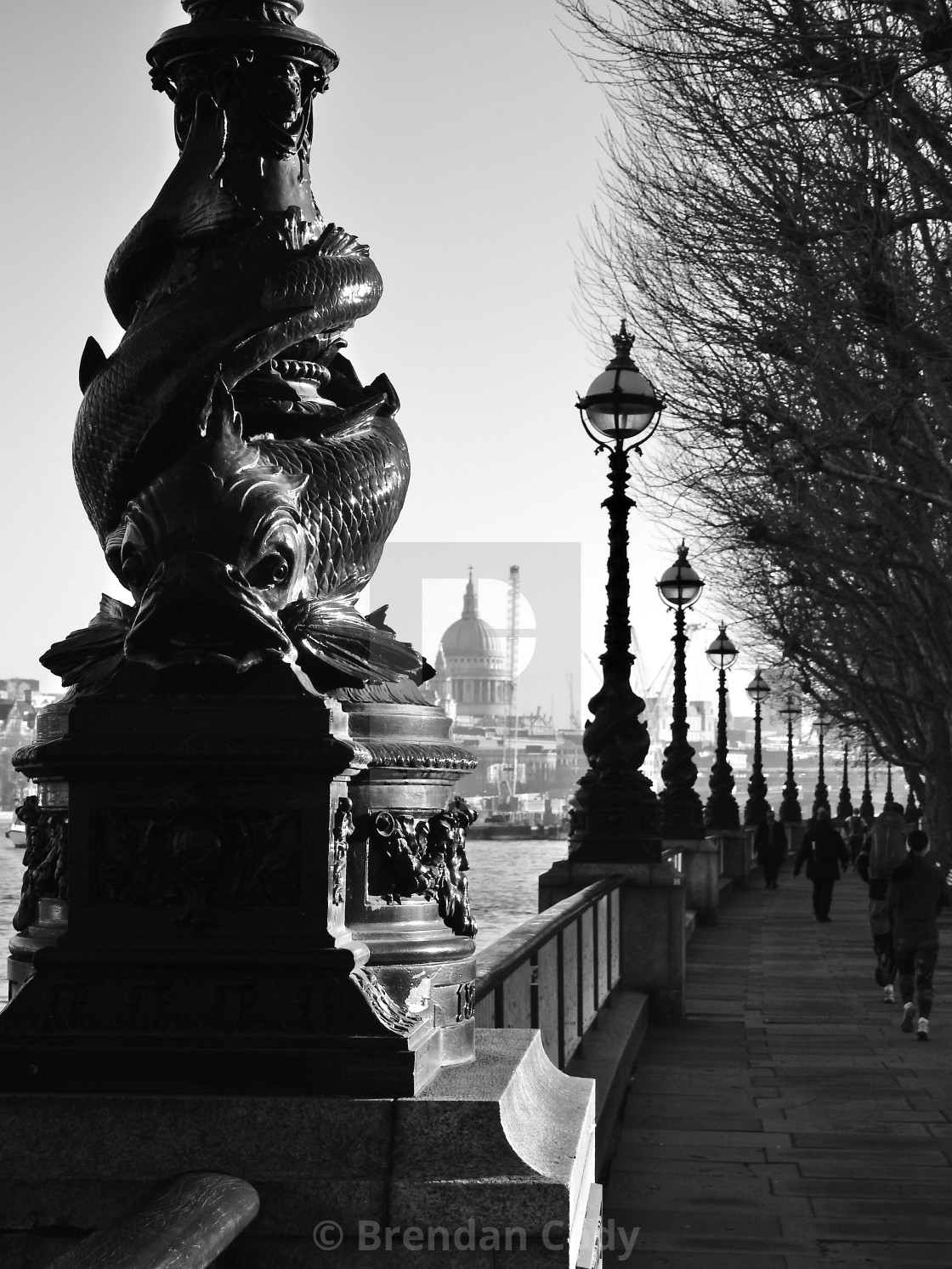
The Thames Embankment aGeorge John Vulliamys' sturgeon lamp posts.
Description
George John Vulliamy (1817–1886) was an English architect who designed some buildings in Victoria Street London, several fire-brigade stations, the pedestal and sphinxes for Cleopatra's Needle on the Thames Embankment, and the sturgeon lamp posts (colloquially "dolphin lamp posts") that line the embankment. Built in stages between 1862 and 1874 by the Metropolitan Board of Works, the Thames Embankment transformed London’s riverscape by reclaiming marshy land next to the river and constructing wide carriage- and foot-ways and a high granite retaining wall, stretching over three miles in total. After they had considered the question of lighting the embankment, the Board of Works took the unusual step of displaying proposed designs for lamp standards on the Victoria Embankment in March 1870, in order to gauge public opinion before selecting a final model; and the lamps were widely illustrated in the building and metropolitan press. Vulliamy’s entwined pairs of dolphins were adapted from the Fontana del Nettuno (1822-23) in the Piazza del Popolo in Rome.
Details
3456 x 4608px
Formats
Digital Download
Printed Product
Buy
From $13.38